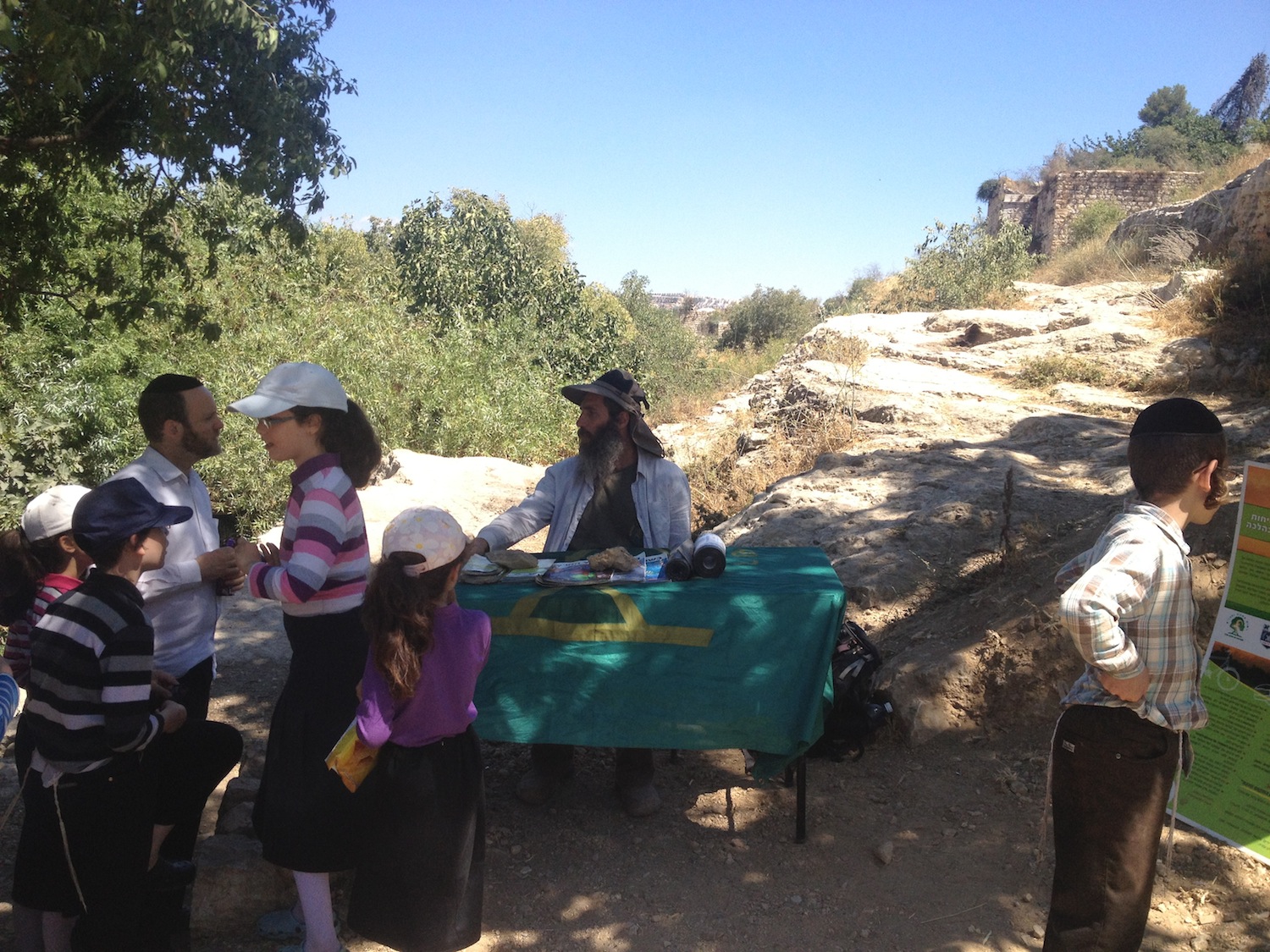
Walking among Lifta´s ruins one has encounters with a usually very diverse crowd. Religious Jews come to swim in the water spring, others come to hike, there are groups from youth movements, and the occasional worker from the Israeli nature reserve. Sometimes Palestinians come to visit their houses, usually though, they don´t get a permit to cross the checkpoints from the West Bank.
The first encounter we had was with an orthodox family, a father with five children. The father tells us that this land belongs to the nature reserve. This place has two names, Mei Niftoach and Lifta. It was an Arabic village that was occupied in 1948, it is clear what it was, the architecture is Arabic. They go to the water spring to swim. Last week they came as well and the kids enjoyed it very much. There is a tunnel at the spring, the water is very cold, it is dark in the tunnels, very adventurous. They like it a lot. They live in Ramot, the father is coming to Lifta since he was a child. He doesn´t remember if he knew what this place was when he was a child.
Some children at the pool tell us that there were Arabs here until either 1948 or 1967. Then they ran away because they saw the Israeli army coming. They say the name of the place is Lifta.
Near the water spring someone from the Israeli nature reserve is putting up an information booth. He tells they are there every day during the holidays, to try to keep the place clean and give information. He tells people about the geology of the spring, what kind of stone it is made of. He is a tour guide, he gives tours through the whole of Israel, but he lives near Lifta, so now he has a job close to home. He tells that the village used to be called Mei Niftoach, it is written in the Bible. Afterwards there were others here, Palestinians, they named it Lifta. They ran away in the war of 1948. The Arabs mainly live in Jordan now or elsewhere. Sometimes he sees them, they come to visit, but still the spring is the most important thing for most visitors, he says. The religious people come here to bath in the water from Jerusalem. The spring is a sort of holy place for the religious Jews.
Under the fig trees in the garden near the spring we meet five girls from displaced families of Gush Katif, a settlements area in Gaza that was evacuated in 2005. They say they still don´t have a home; they live in caravans until today. The government gave them compensation for the house, but it was not enough to buy a house elsewhere. They live in Ariel now, a settlement in the West Bank. The houses are much more expensive there then they were in Gush Katif. One of the girls says they are a kind of refugees, until today. They don´t know what this place is, only that it’s named Lifta. They think that it might have been a Mikveh (a bath used for the purpose of ritual immersion in Judaism), but they are not sure. One girl came here already and she's a youth leader at Bnei Akiva (a religious Zionist youth movement). It is one of the activities of the movement to come to Lifta. Her mother did Aliyah when she was twenty, she comes from New Jersey.
A boy, around fifteen years old comes often to the pool on his bikes. He doesn't know what this place is other than its name Lifta.

ליפתא / Lifta

